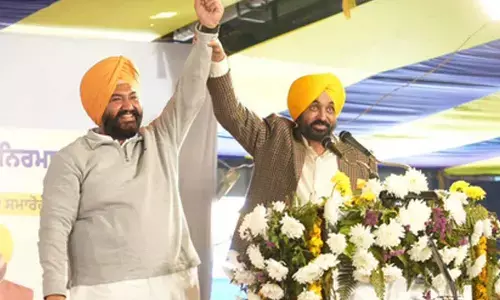Tips for awesome presentations

A presentation can also be used as a broad term that encompasses other ‘speaking engagements’ such as making a speech at a wedding, or getting a point across in a video conference.
A presentation is a means of communication that can be adapted to various speaking situations, such as talking to a group, addressing a meeting or briefing a team.
A presentation can also be used as a broad term that encompasses other ‘speaking engagements’ such as making a speech at a wedding, or getting a point across in a video conference.
To be effective, step-by-step preparation and the method and means of presenting the information should be carefully considered.
A presentation requires you to get a message across to the listeners and will often contain a 'persuasive' element. It may, for example, be a talk about the positive work of your organisation, what you could offer an employer, or why you should receive additional funding for a project.
An Interesting start
Start by saying “there are only three things unavoidable in the world: Death, taxes and advertising”. This would intrigue the audience and produce grins, smiles and even approving nods. We are bombarded by advertising. So the catch and mice game goes on. The customers’ tries to move away from advertising as much as possible and the advertisers want to catch them and entice them back.
Maintain eye contact at all times
Frequently it has been noticed that presenters don’t maintain eye contact and mumble and seen to be talking with themselves. That is an absolute no-no. Keep moving your eyes from one side of the hall to the other, from the front to back and encompass the audience. Make eyes contact and smile. Most audience like it and respond by nodding and smiling back. Your first battle already been won.
KISS is an acronym for the principle "Keep it Simple, Stupid!” Other variations include "keep it short and simple", "keep it simple AND stupid" or "keep it simple and straightforward". The KISS principle states that simplicity should be a key goal in everything we do and that unnecessary complexity should be avoided. As readers and as audience we don’t want be carpet bombed with PPTs, data and lots of English written on the PPT. Make it as simple as possible. If the time given is ten minutes see that your PPT slides are limited to ten slides only. One slide per minute.
Always err onto to the side of caution. If the group has mixed audience see that your presentation is tuned to the most common denominator. That is if there is a mixed audience of doctorates, post graduates and graduates, make your presentation in a way that even the graduates understand, grasp and get enlightened by the topic. If the graduates get the gist of the talk, the doctorates would understand it automatically. Vice versa might not be possible.
Four x Four principle
Any slide that is used in a presentation should follow the 4 x 4 principle. There should be 4 lines in a slide and 4 words per slide. If a picture is used minus 2 line and eight words. That is if a picture is used then the slide should have 8 words. The font size should be a minimum of 18. Less is better in presentation. Use matter and visuals to create an impact and do not read out your slides.
A picture is worth a thousand words
Most learners are visual learners. Use visuals wherever necessary. Visual can create an impact and are difficult to forget. Bhopal gas tragedy killed more than 20,000 people. Too many visuals and reports of the tragedy would be counterproductive and would they leave the readers numb and there would be a feeling of Déjà vu.
Man biting a dog is news rather than dog biting the man
Always strive for a dramatic impact. You could always say that there are many who eat shit for living. That will wake up any slumbering audience members. You could always quickly add that you are talking about dung beetles. This would leave the most serious person with a smile on his face.
Dog biting man is not news rather it is the other way round. So when a PPT slide is written it has to bite. It should have that element of surprise and intrigue. Otherwise the reader/viewer would be saying “Yawn! How boring, tell me another thing!”
The head line “No Mamata for CPM in West Bengal” is a very good example. Mamta Banerjee is the maverick TMC leader who ended the very long 34 year CPM rule in West Bengal. Mamata is Hindi/Bengali means Love. So the word Mamta became a very good tool for a clever headline. Similarly Jayalalitha the AIDMK leader who defeated M. Karunanidhi of the DMK prompted one news reporter to pen the headline “Jayalalitha shows no Karuna” Karuna in Sanskrit/Tamil means mercy. The thumping win of AIDMK over DMK was cleverly captured in the headline.
Paraphrasing
Many times the listeners of a presentation ask the presenter questions and some of these may be complicated or not properly structured. The presenter needs to repeat what was asked in order to verify the meaning of the question posed. This is called paraphrasing. The term simply means repeating another person’s ideas in your own understanding but retaining the thought of the statement or question.
If I heard you correctly, you were asking if the process is reversible or not …”
“You were enquiring whether less than 60 per cent is a fail grade…Is that right?”
“As I understand it, you want to know if the break will be for 5 minutes only…. Am I correct?”
“So your question is about the maximum limit of pages in the project …”
Humor
Audience likes to associate themselves with cheerful presenters. Always have a smile on your face. It takes 71 muscles to frown only 21 to smile. So smile and smiling is very inclusive. Don’t worry if you make a mistake in the presentation. Most listeners have empathy and will forgive small errors and mistakes.
Prod
Frequently you would hear your teachers and bosses quip “Have you done the PROD”. PROD stands for Planning, Research, Organising and Delivery. Planning is the first part. Plan out what to say and why it should it be said. How does it help the audience and what would be the take away. Then the Research. It is not your personal opinion on the subject that matters. It is the pool of knowledge that has to be shared. The presenter is only the facilitator or the conduit for the process. The comes in organisation. Organise the topic sequentially and for maximum effectiveness. How many slides, how much of matter, font selection and size, visuals, graphs and table have to be considered.
The final and the most important aspect is the delivery. Practice the presentation to a nicety. We should know our presentation like the back of our hand. We should know the exact content of the slide and should be able to explain each term and concept that we have put up. Nothing is more annoying than a presenter who does not know what he has put up in the slide. And be very careful about spelling mistakes. Spelling mistakes frequently happen when capital letters are used. Spell checkers don’t cheek spellings of the words typed in capital letters.
Tell them, tell them what you told them, tell them again
Meaning that a thing has to be repeated three times before the audience can register it in their mind and remember it for a life time. This is good for a class room scenario where the fundamentals have to be drilled into the minds but for a general audience one effective presentation is more than adequate. The additional inputs can be given in the form of a PPT or link to a blog or a website that the audience can browse and learn at their own convenience.
By Dr M Anil Ramesh (The author is a Director-Academic, Siva Sivani Institute of Management, a premier B-School in Hyderabad. Send in your queries: [email protected] and [email protected])














